Edo-Tokyo Museum
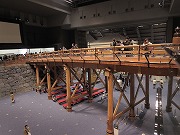 The Edo-Tokyo Museum (Edo Tokyo Hakubutsukan, 江戸東京博物館) is a public museum focusing on the history of the city of Edo and its successor Tokyo from the Edo to Showa period. There are some life-size models and many scale models of architecture which existed in these periods.
The Edo-Tokyo Museum (Edo Tokyo Hakubutsukan, 江戸東京博物館) is a public museum focusing on the history of the city of Edo and its successor Tokyo from the Edo to Showa period. There are some life-size models and many scale models of architecture which existed in these periods.
You can take photos freely inside. It's a 3-minute walk from Ryogoku Station of the JR Sobu Line or the Toei Oedo Line.
Closed from April 2022 to 2025 for renovations.
Edo

This is a life-size (but half in length) model of Nihonbashi Bridge. This bridge was located at the starting point of the five major roads in the Nihonbashi area, Chuo-ku, Tokyo.

The Kanda Matsuri, the most important festival for Kanda Myojin Shrine, used to use be joined by many dashi floats, most of which are lost now.
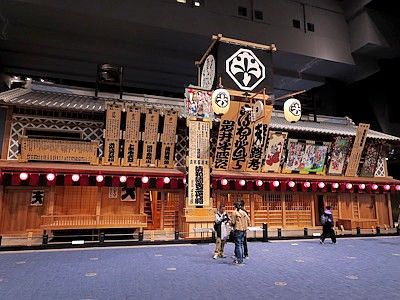
The Nakamuraza was a renowned kabuki theater.
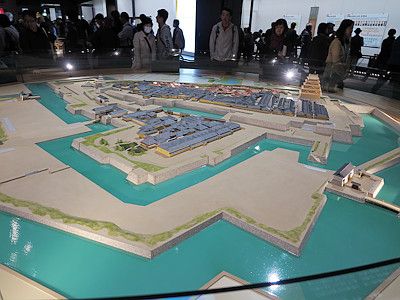
Edo Castle was the residence of Tokugawa shoguns and at the same time where its shogunate government was located. It was converted into the Tokyo Imperial Palace when the feudal times came to an end.
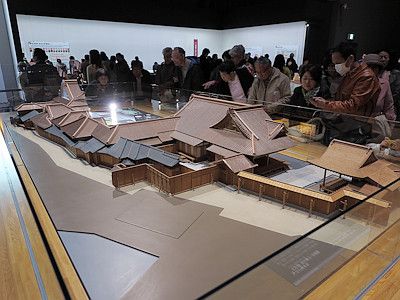
Honmaru Goten was the main office and housing complex of shoguns.
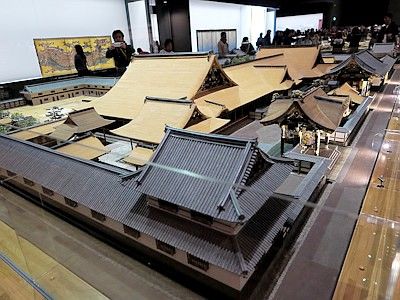
A feudal lord in the Edo period had to live both in his domain and Edo. In Edo, beside his main residence placed in Edo proper, he had a few suburban residences, since the town of Edo was often destroyed by massive fire and he needed a tentative house to live while reconstructing the main residence. This scale model is the main residence of the Matsudaira clan who ruled the Fukui domain, now part of Fukui Prefecture.

This is the miniature model of a commoner district near Nihonbashi in the mid-17th century.
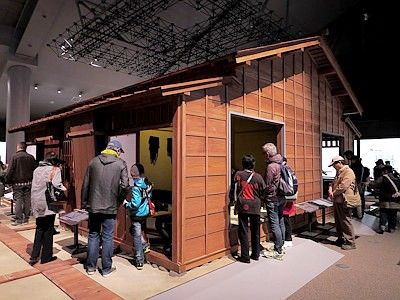
These are life-size models of residences poor craftsmen and the like lived in Edo.
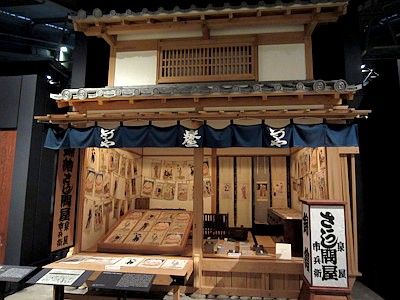
This is the life-size model of a shop selling ukiyo-e printings.
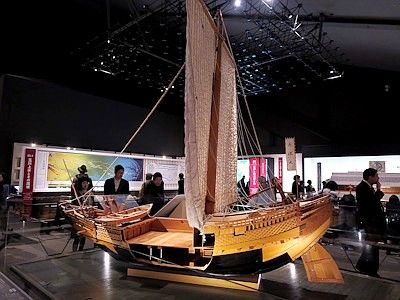
A hishigaki kaisen is a freight ship which delivered goods from Osaka to Edo.
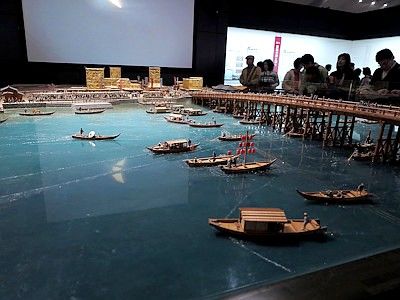
In mid-19th century, the west bank of the Sumida River around the Ryogokubashi Bridge was an entertainment area.
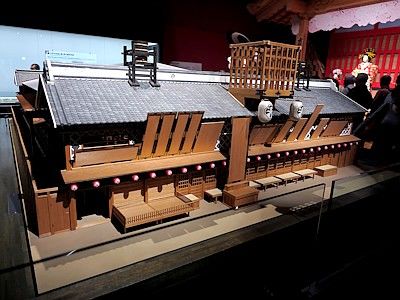
Along with the life-size model of a theater, there's also a scale model of it.
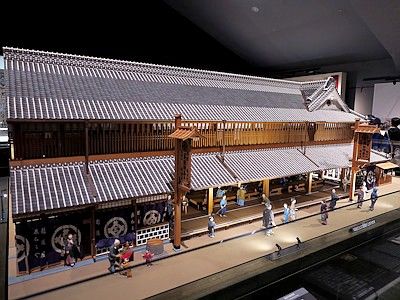
The Mitsui family, who started Echigoya Store in 1673, was one of the richest merchants in Edo. Mitsui family managed to survive the Meiji Restoration and built Mitsui Zaibatsu (Mitsui Conglomerate). The clothing retailor devision of Echigoya has developed into modern-day Mitsukoshi department store.
Tokyo
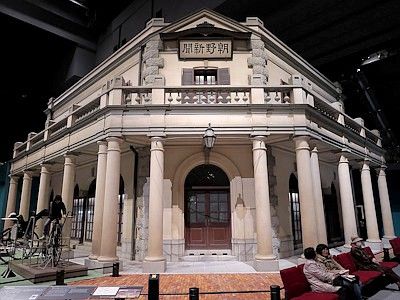
Choya Shimbun was a newspaper publisher in the early Meiji era. Shown in the photo is the life-size model of its office constructed in 1876.
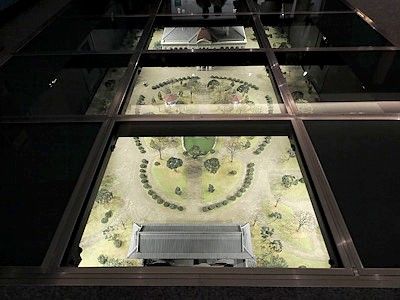
Rokumeikan was the state guest house from 1883 to 1887. It was constructed in Western-style in an effort to send a visual message to then world powers that Japan is a not an uncivilized country any more, thus deserves unequal treaties to be revised (and it failed).
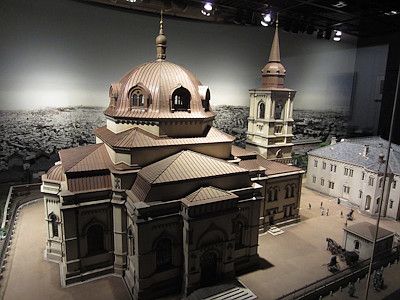
Nicholaido, or Holy Resurrection Cathedral, is the top cathedral of the Japanese Orthodox Church. It was constructed in 1891, and though it was severely damaged in the Great Kanto Earthquake of 1923, it has managed to survive to this day.
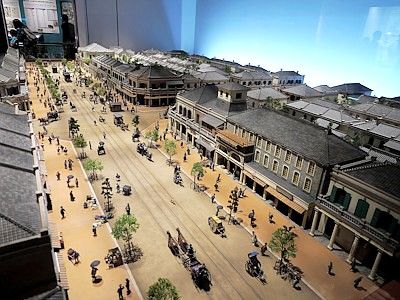
After the traditional townscape of the Ginza district was destroyed by fire in 1872, buildings there were reconstructed in Western-style using bricks to resist fire, though they eventually perished in the 1923 Great Kanto Earthquake.
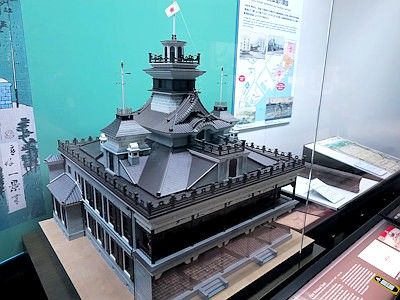
This is the scale model of Daiichi National Bank, a giyofu-style building constructed in 1872. A Giyofu building is architecture which domestic carpenters built with traditional skills imitating real Western-style buildings they saw in large cities like Tokyo and Yokohama.

Ryounkaku Tower was a twelve-story-high brick tower erected in Asakusa. It was completed in 1890 but was destroyed by the Great Kanto Earthquake of 1923.
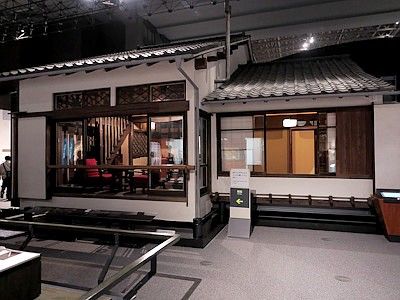
This is a model of a house built before WWII. There are several life-size models of houses or rooms before and after the war.
Yokoamicho Park and Kyu-Yasuda Garden are close to Edo-Tokyo Museum.